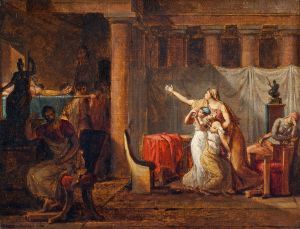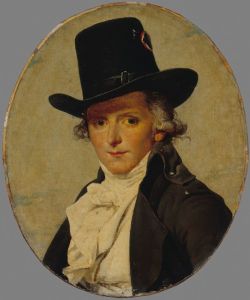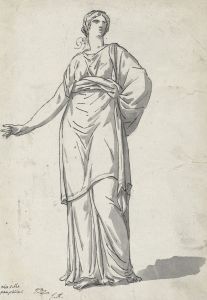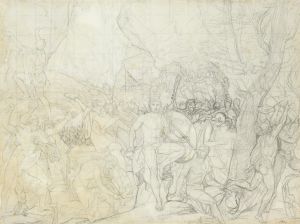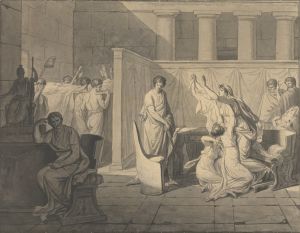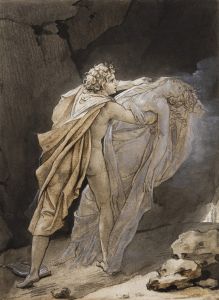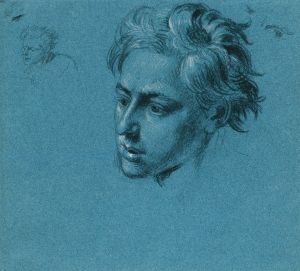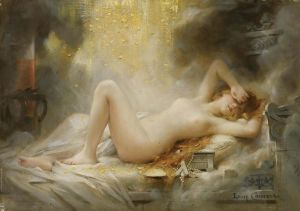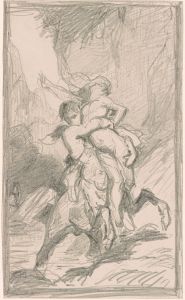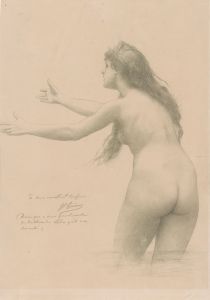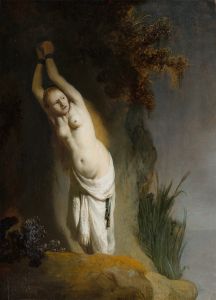
The Farewell Of Telemachus And Eucharis
A hand-painted replica of Jacques Louis David’s masterpiece The Farewell Of Telemachus And Eucharis, meticulously crafted by professional artists to capture the true essence of the original. Each piece is created with museum-quality canvas and rare mineral pigments, carefully painted by experienced artists with delicate brushstrokes and rich, layered colors to perfectly recreate the texture of the original artwork. Unlike machine-printed reproductions, this hand-painted version brings the painting to life, infused with the artist’s emotions and skill in every stroke. Whether for personal collection or home decoration, it instantly elevates the artistic atmosphere of any space.
"The Farewell of Telemachus and Eucharis" is a painting by the renowned French Neoclassical artist Jacques-Louis David, completed in 1818. This work is one of David's later pieces, created during his exile in Brussels following the fall of Napoleon. The painting is notable for its departure from David's earlier, more politically charged works, reflecting a shift towards more personal and intimate themes.
The painting depicts a scene from the French writer François Fénelon's novel "Les Aventures de Télémaque," published in 1699. The novel is a didactic tale that follows the journey of Telemachus, the son of Odysseus, as he searches for his father. In the story, Telemachus encounters Eucharis, a nymph, and the two fall in love. However, Telemachus is ultimately compelled to leave Eucharis to continue his quest, leading to their poignant farewell.
David's painting captures this moment of parting with emotional intensity. Telemachus and Eucharis are shown in a tender embrace, their expressions conveying a mixture of love, sorrow, and resignation. The composition is intimate, focusing closely on the figures, which are rendered with David's characteristic attention to detail and clarity. The use of light and shadow enhances the emotional depth of the scene, highlighting the contrast between the warmth of their affection and the inevitability of their separation.
The painting is executed in the Neoclassical style, characterized by its clarity of form, sober colors, and strong emphasis on line over color. This style was dominant in Europe during the late 18th and early 19th centuries and was heavily influenced by the art and culture of classical antiquity. David, as one of the leading figures of Neoclassicism, was instrumental in popularizing this style, which sought to convey moral seriousness and an idealized vision of human virtue.
"The Farewell of Telemachus and Eucharis" is significant not only for its artistic qualities but also for its reflection of David's personal circumstances. By the time he painted this work, David was living in exile, having been a prominent supporter of Napoleon. This personal context may have influenced the painting's themes of love, loss, and the passage of time, as David himself was separated from his homeland and the political ideals he once championed.
Today, "The Farewell of Telemachus and Eucharis" is housed in the J. Paul Getty Museum in Los Angeles, California. It remains an important example of David's later work and a testament to his enduring influence on the development of Western art. The painting continues to be studied and admired for its emotional depth, technical mastery, and its place within the broader narrative of David's artistic career.





